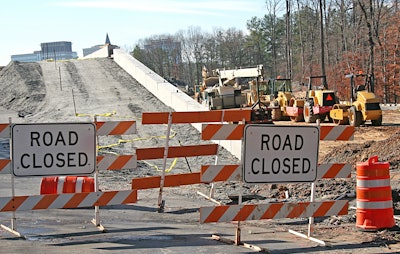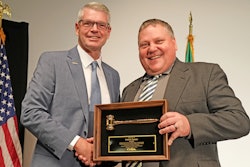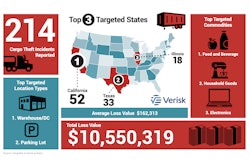
A new assessment of the nation's infrastructure finds conditions of the roads you drive over and the bridges you cross are not brilliant. In fact, they are given middling grades on an industry group's latest report card.
The American Society of Civil Engineers (ASCE) today released its 2025 Report Card for America’s Infrastructure. The Report Card assessed U.S. infrastructure with an overall ‘C’ grade.
The report says legislation passed by Congress since the 2021 Report Card sparked progress. However, according to the ASCE's report, "more work and investment are needed to overcome decades of underinvestment and adapt the country’s transportation networks, water systems, electric grid and broadband services to meet current and future demands."
Using an ‘A’ to ‘F’ school report card format, ASCE’s Report Card for America’s Infrastructure provides an assessment of current infrastructure conditions and needs, evaluating 18 categories.
The grades for various segments of the nation's infrastructure were:
- Ports -- B
- Rail -- B -
- Broadband, Solid Waste -- C +
- Bridges, Hazardous Waste -- C
- Inland waterways, Drinking water, Public parks -- C -
- Aviation, Dams, Energy, Levees, Roads, Schools, Wastewater -- D +
- Stormwater, Transit -- D
To view the full Report Card, visit InfrastructureReportCard.org
The 2025 grade, an improvement over the ‘C-’ overall grade in 2021, is the highest grade given by ASCE since it began its Report Card in 1998.
While the Report Card shows 2021 investments from the Infrastructure Investment and Jobs Act (IIJA) have started to pay off, ASCE projects a $3.7 trillion gap between current planned infrastructure investments and what must be done to have the nation’s infrastructure in good working order — an increase from the $2.59 trillion gap reported four years ago.
The ASCE says its report underscores the essential need for lawmakers to maintain existing levels of federal infrastructure investment, and increase participation from state and local governments and the private sector, to reduce costs for American households and bolster economic growth.
“Every American household or business immediately feels the impact of just one inefficiency or failure in our built environment,” said Darren Olson, 2025 Report Card chair. “However, if we maintain investments, each American household can save $700 per year. Better infrastructure is an efficient investment of taxpayer dollars that results in a stronger economy and prioritizes American jobs, resilience and connectivity.”
According to the ASCE's Report Card, 39% of major roads in the U.S. are in poor or mediocre condition, an improvement from the 43% recorded in 2020. The ASCE says, driving on deteriorated and congested roads still costs the average driver over $1,400 per year in vehicle operating costs and lost time.
Furthermore, the impacts of extreme weather events present challenges for maintaining existing roads and planning future projects. Recent investments, including more than $591 billion since late 2021 from the Infrastructure Investment and Jobs Act (IIJA), are a positive step.The nation’s roadways still face a $684 billion funding gap over the next 10 years.
"Sustained and robust infrastructure investment is needed to maintain and improve the roadway network for the future," according the the report card.
ASCE's report care says there are 623,218 bridges in the country, with an average age of about 47 years, that serve as vital connections throughout the transportation system. Many bridges are approaching or have exceeded the 50-year life they were designed for, according to the ASCE.
The report card says in 2024, over 4.9 billion motor vehicle trips were taken daily across the nation’s 623,218 bridges, slightly more than the daily trips recorded in 2021. Of these bridges, 49.1% are in fair condition, 44.1% are in good condition, and 6.8% are in poor condition.
Although bridges in poor condition are not necessarily unsafe, the ASCE says they require replacement or significant rehabilitation work and present a higher risk of future closure or weight restrictions.
Some 63,085 of the nation’s 623,218 bridges have restrictions regarding the weight of vehicles that can safely cross. In addition to presenting safety concerns, posted bridges can cause heavy vehicle operators to take alternate routes, increasing travel time for emergency response vehicles, commercial trucks, and school buses.











